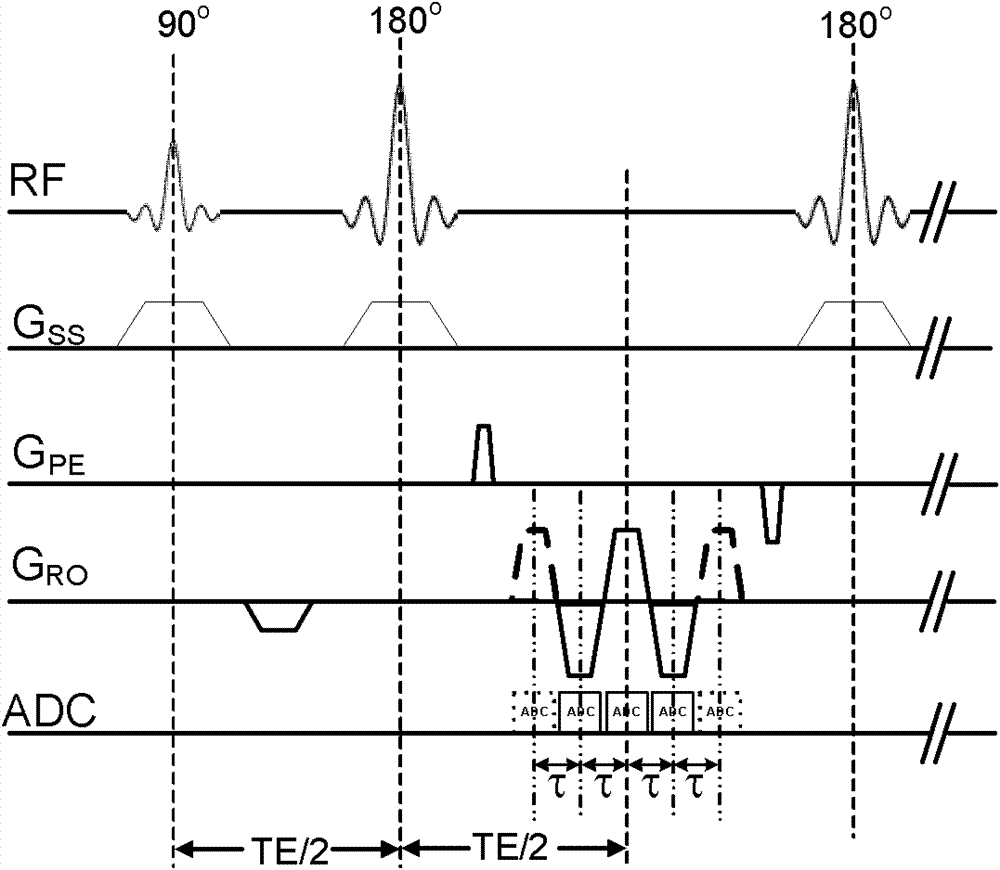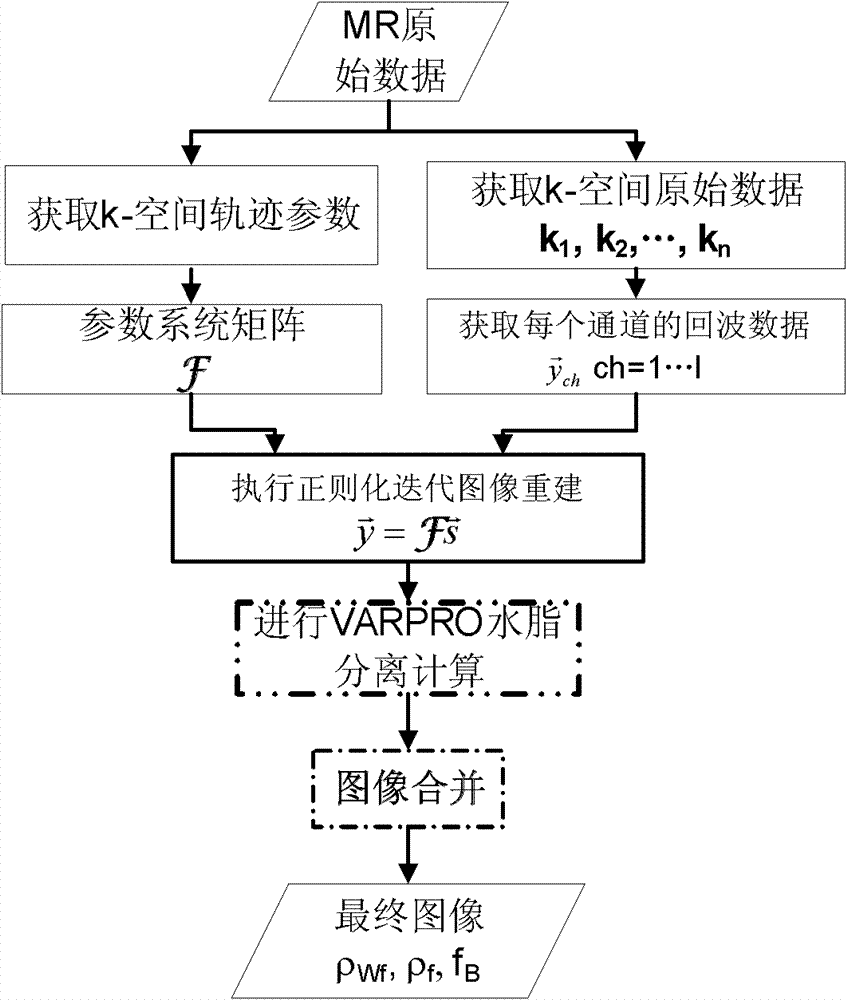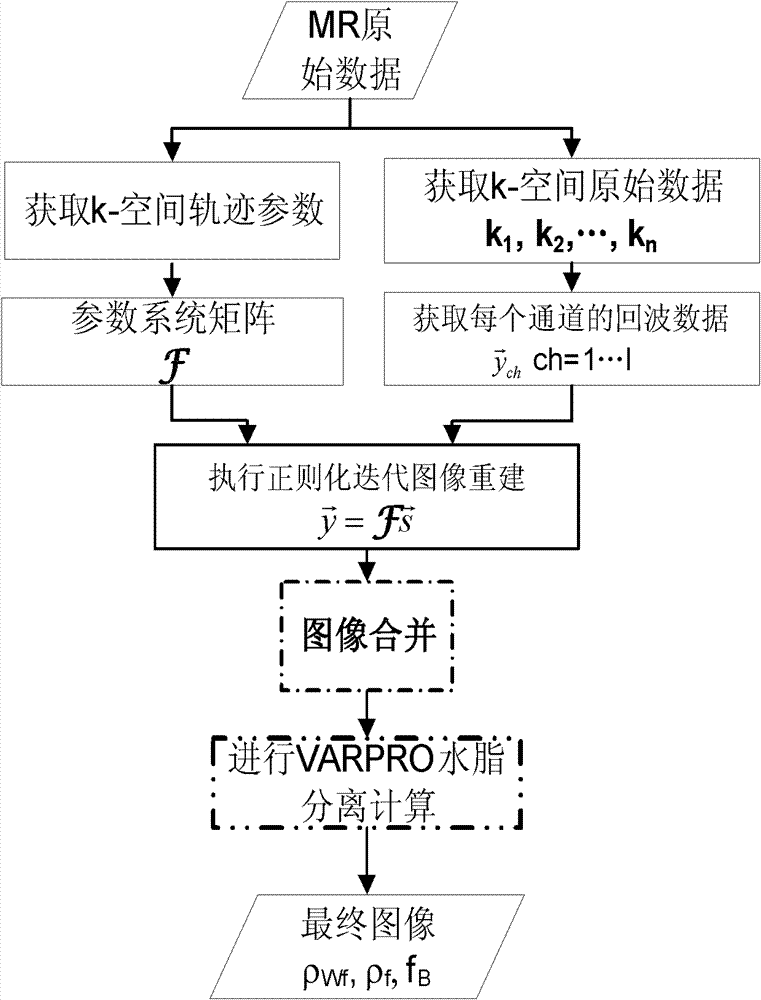Water and fat separation method based on under-sampling k-space data
A water-fat separation and spatial data technology, applied in the field of medical image processing, can solve the problems of water-fat separation failure, large computer resources, and consumption, and achieve the effect of low calculation amount and calculation demand, and easy image merging
- Summary
- Abstract
- Description
- Claims
- Application Information
AI Technical Summary
Problems solved by technology
Method used
Image
Examples
Embodiment 1
[0040] This embodiment provides a water-fat separation method for under-sampled k-space data, and the specific implementation process is as follows:
[0041] Fast spin echo is called FSE (Fast Spin Echo) or Turbo SE (TSE) for short. In a common SE sequence, a 90° RF pulse is first transmitted in a TR cycle, and then a 180° RF pulse is transmitted to form a spin echo. The FSE sequence is the same as the multi-echo sequence. In one TR period, a 90° RF pulse is firstly transmitted, and then multiple 180° RF pulses are successively transmitted to form multiple spin echoes. However, there is an essential difference between the two. In the multi-echo SE sequence, a specific phase encoding data is obtained in each TR cycle, that is, the phase gradient in each TR is scanned with the same intensity, and the collected data only fills one row of k-space, and each echo participates in generating a images, and finally multiple images with different weights can be obtained. In the FSE se...
Embodiment 2
[0072] This embodiment provides another water-fat separation method for under-sampled k-space data, which differs from Embodiment 1 in that in the sixth step, images from different echoes of different channels are input according to image 3 The process shown is processed, and the specific processing method is: B1. Input the images of different echoes of each imaging channel, and use the VARPRO method to calculate the B0, water image and fat image corresponding to each imaging channel; B2. For a single channel The B0, water image and fat image above are combined accordingly.
[0073] The solution described in this embodiment and the solution described in Embodiment 1 may be complementary implementation solutions. Its selection may be based on the signal-to-noise ratio of the image, etc. For example, the noise level pre-scan before imaging can be collected to obtain the signal-to-noise ratio of a single channel, or based on the ratio of the k-space echo center to the platfor...
PUM
 Login to View More
Login to View More Abstract
Description
Claims
Application Information
 Login to View More
Login to View More - R&D
- Intellectual Property
- Life Sciences
- Materials
- Tech Scout
- Unparalleled Data Quality
- Higher Quality Content
- 60% Fewer Hallucinations
Browse by: Latest US Patents, China's latest patents, Technical Efficacy Thesaurus, Application Domain, Technology Topic, Popular Technical Reports.
© 2025 PatSnap. All rights reserved.Legal|Privacy policy|Modern Slavery Act Transparency Statement|Sitemap|About US| Contact US: help@patsnap.com



